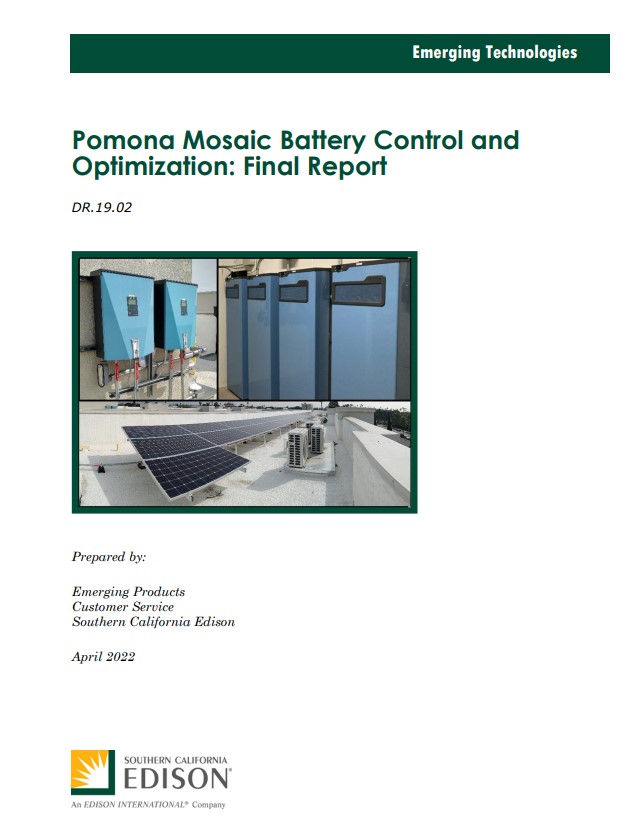Project Info
COMPLETE
 Project Title
Project Title
 Project Title
Project Title
Low Income Multi-Family Battery Storage, Solar PV and Data Collection - Mosaic
Project Number DR19.02 Organization SCE End-use Plug Loads and Appliances Sector Residential Project Year(s) 2019 - 2022Description
"Battery energy storage systems work by capturing electricity produced by both renewable and nonrenewable resources and storing it for discharge when required. The solution allows users to come off the grid and switch to stored electricity, at a time most beneficial, giving greater flexibility and control of electrical usage." These systems need to be better understood so SCE can provide better customer support, improved grid infrastructure design, and gain higher Customer Satisfaction scores from these customers. The documented results will identify the technology and interface benefits and gaps within this emerging market and necessary technology advancements. Low Income Multi-Family Battery Energy Storage Systems, Solar PV and system software will continue to grow and align potential GRID opportunities through customers that can shape their loads, reduce demand and shift demand in support of GRID and Market resilience.
Project Report Document
Loading PDF Preview...
